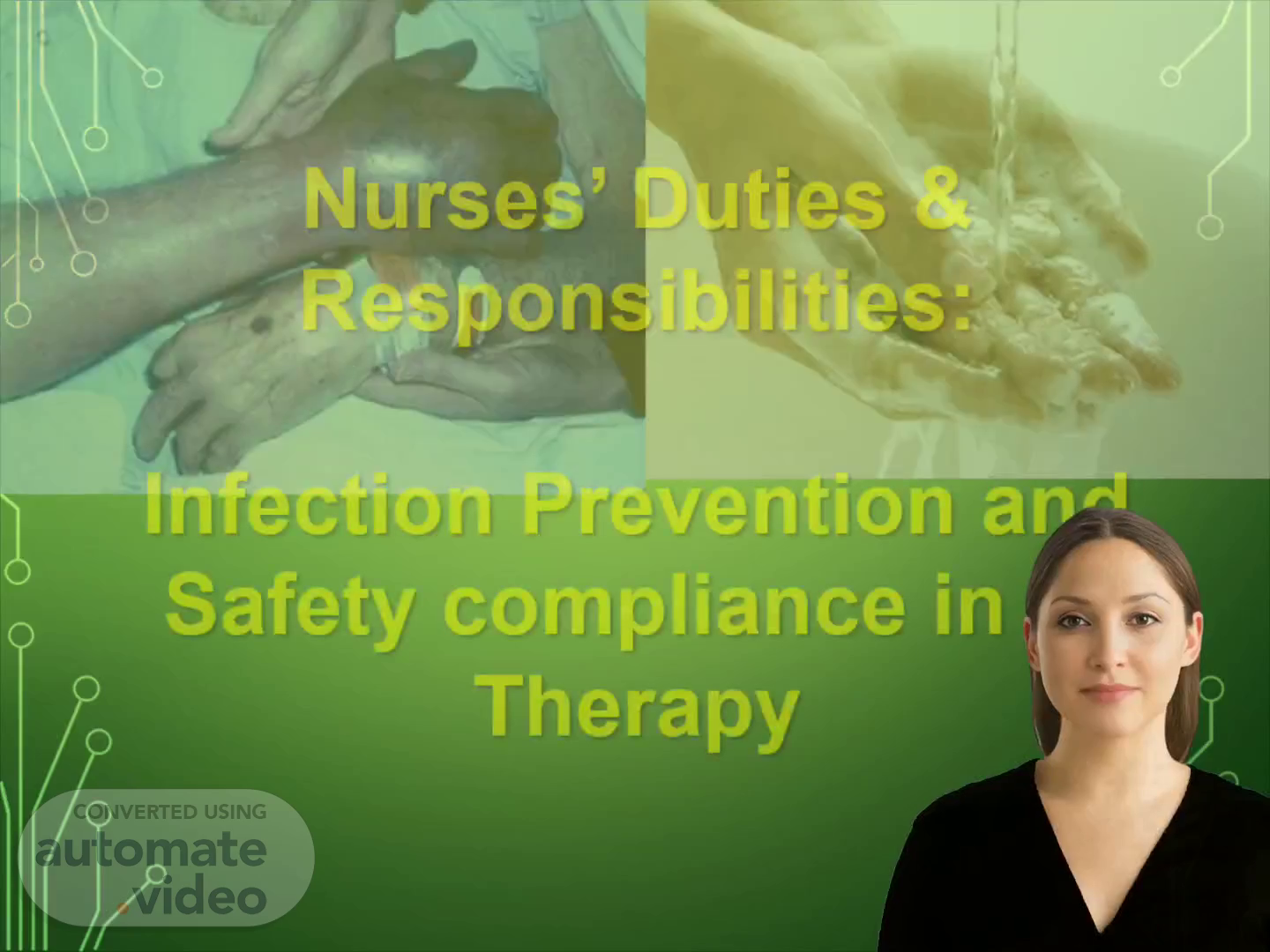
Preventing Nosocomial Intravascular related Device Infection
Scene 1 (0s)
[Virtual Presenter] Today, we will discuss an important aspect of a nurse's job - preventing infection and ensuring safety in IV therapy. As nurses work to provide the best care and safety possible to patients, they must be aware of the risks of infection and how to prevent them. We will examine the various procedures and methods used to ensure the safety of patients and healthcare workers..
Scene 2 (25s)
[Audio] We are going to focus on the importance of infection prevention and safety compliance in IV Therapy as part of nurses' duties and responsibilities. This slide highlights the importance of preventing needle stick injuries, showing the comparison between the recommended flow rate of 32L/hr and the slower flow rates of 9.3, 7.6, and 6.4. Taking the time to ensure the correct flow rate is used can reduce the potential of needle stick injuries, which can save time and money, as well as protect the health and safety of everyone involved..
Scene 3 (1m 1s)
[Audio] Discussing infection prevention and safety compliance in IV therapy is a responsibility of nurses. It is important to consider features such as highly elastic, clear housing, septum, and seals when handling sharps, to ensure optimal flow rates for IV therapy..
Scene 4 (1m 20s)
[Audio] When performing IV therapy, a needleless syringe can be employed to reduce the risk of infection and bolster safety compliance. Before accessing the luer lock device, be sure to disinfect the area with an alcohol prep pad, employing a straight-on approach without any needles or blunt cannula. Once the solution is connected, flush it into the IV. Following this procedure is essential to ensure patient safety..
Scene 5 (1m 49s)
[Audio] Disinfect with an alcohol prep pad before accessing the luer lock device. Insert the barrel of the syringe using a straight-on approach, taking care not to use needles or blunt cannulas with the device. Flush the solution once finished..
Scene 6 (2m 7s)
[Audio] When performing IV therapy, nurses must take a number of safety precautions. This includes not recapping needles, and passing sharp instruments carefully. Additionally, proper disposal of medical waste is also essential. Adhering to these safety measures ensures infection prevention and compliance with safety regulations when administering IV therapy..
Scene 7 (2m 33s)
[Audio] Sharps must be properly disposed of in puncture-resistant containers and nurses must observe proper waste segregation. The containers should be replaced when they are two-thirds or three-quarters full in order to ensure safety compliance and infection prevention..
Scene 8 (2m 50s)
abstract. Thank You!!.